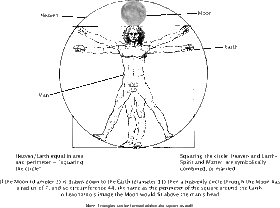Only when full does the Moon "escape" the sun. The waning cycle than progressively delivers the Moon back into the daytime skies as it leads the sun.
[timing is everything down to the last molecule.]
The Moon then disappears for about "three" days, lost in the light of the Sun at the new moon.
[melding of the sun and moon; melding of the man and woman; results in life and can not enter existence with out this connection.]
The Moon, whose invisible claws draw the tides up and down the beach twice a day. The Earth's atmosphere above our heads and even its crust beneath our feet rise and fall to this lunar rhythm.
[have you ever taken notice of one who is proficient in the way; they exude a rhythm that seems extraordinary when it reality it is just the connection to the rhythms of the Universe; the planet; all those living and breathing entities that make up the myriad things.]
The tides are synchronized to the lunar day and therefore to the Moon's position in the sky.
[it appears that the moon has a greater significance than you would imagine since it also has effect on land and sky. Truly shows the string connectivity of all things in the Universe.]
In isolation tanks, human bodily rhythms eventually transfer from the solar to the lunar day.
[does this equate to the changes from day to night and back? Many of the old masters have mentioned times of the day, seasons, etc. to perform/practice certain kata/techniques, etc. to benefit the physical such as our sight, hearing, and tactile touch, etc.]
The Earth and Moon form a huge dumbbell in space, with their center of rotation located about 1,000 miles beneath the Earth's surface.
[I can not yet begin to see the significance of the line intersecting the Earth 1,000 miles below the surface. It also means that depending on the rotation of the Earth this line changes. I wonder if the change of location has significance on that particular area directly above its location as either positive or negative in nature…?]







